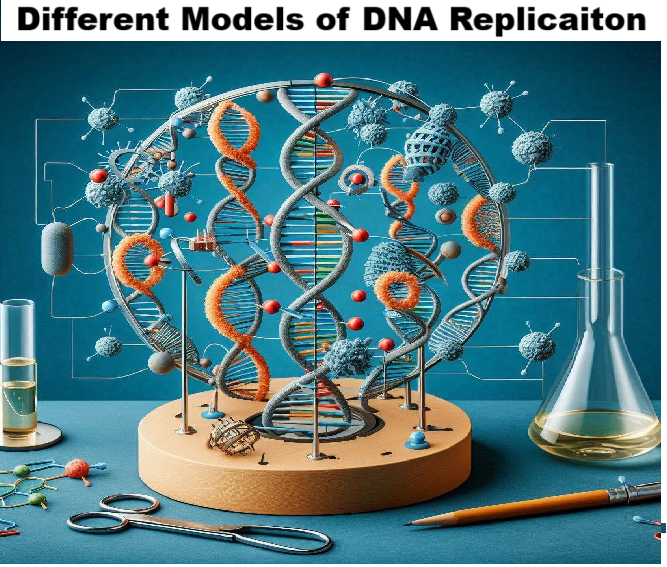In this article, we’re going to discuss how DNA replicates. Well, at present we know how DNA replicates, but when Watson and Crick gave the three dimensional model of DNA in 1953, scientists didn’t know how DNA would duplicate. Scientists gave different models for DNA replication. In the following section, we will discuss the three models of DNA and then the experimental proof by Meselson and Stahl for the semiconservative nature of DNA replication.
The three different DNA replication models suggested by scientists include:
- Conservative model of DNA replication
- Semi-conservative model of DNA replication
- Dispersive model of DNA replication
Conservative model of DNA: According to this model the parental DNA will be conserved in the next generation. For example, a cell containing a double stranded parental DNA (represented by black color) will divide by mitosis into two daughter cells. Now, one daughter cell will contain the parental double stranded DNA and the other daughter cell will contain daughter DNA double strands (represented by red color).
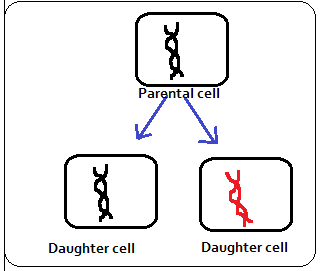
Semiconservative model: In this model, half of the parental DNA would be conserved in the next generation. For example, if a call contains double stranded parental DNA (represented by black color) and ready to divide by mitosis – in each of the daughter cell, half of the parental DNA would be conserved. In other words, in each new cell, one strand of DNA would be parental and the other strand would be daughter DNA. Now, you can make a difference between conservative and semiconservative model of dna replication.
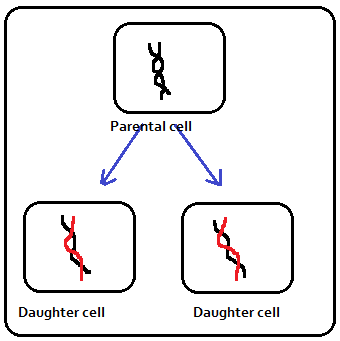
Dispersive model: In this model, when parental DNA replicates, it forms a mixture of parental DNA and daughter DNA in the next generation.
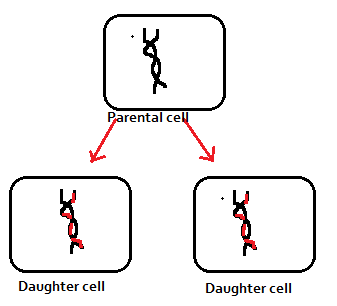
Experimental Proof for the Semiconservative Model of DNA Replication:
This experiment was done in 1958 by two young scientists of that time. In order to perform the experiment, they used E. coli bacteria, Nitrogen isotopes and Caesium chloride density gradient. We will discuss this experiment in different steps.
Step 1:
In this step, scientists grew E. coli bacteria in a heavy nitrogen isotope solution i.e., NH4Cl (15N). We know that DNA contains a large amount of nitrogen and if a bacterium is grown in a medium containing nitrogen of specific isotope (in this case, 15N), the bacteria would use the heavy isotope of nitrogen to build DNA. So, the daughter strands of newly replicated DNA would vary by weight and could be easily separated by density gradient centrifugation.

After growing bacterium for several generations in a heavy nitrogen isotope environment, Meselson and Stahl pulled some samples of E. coli out of the growth medium for testing. They centrifuged the sample for initial separation and then they added salt to the bacteria so that the bacteria could release its DNA contents in order to further analyze the sample. When the DNAs of bacteria were transferred to Cesium chloride density gradient, it formed a band at the bottom (similar to the heavy density of Cesium chloride). The band formed by 15N-DNA was called as Fo generation.
Step2:
In step-2, the N-15 labeled DNA containing bacteria are transferred to N-14 solution (NH4Cl solution) to grow for all subsequent generations so that any new DNA strands produced would have a lower density than the original parental N-15 DNA. Now, the new strands formed after 20 minutes (generation time of E. coli) are again sent for density gradient and a new band formed which had a lower density than the Fo generation DNA. This new band formed DNA was called F1 generation.

Likewise, after 40 minutes, two bands were seen, one at the middle and one at the top (light density). However, after 60 minutes, the hybrid density (shown in the middle) got thinner and the light density band got thicker. The N-15—N-14 DNA depleted because scientists never reintroduced N-15 nitrogen in the medium.
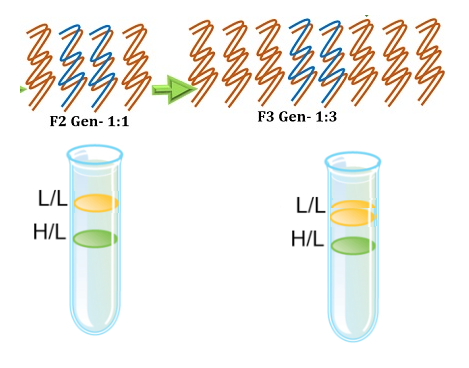
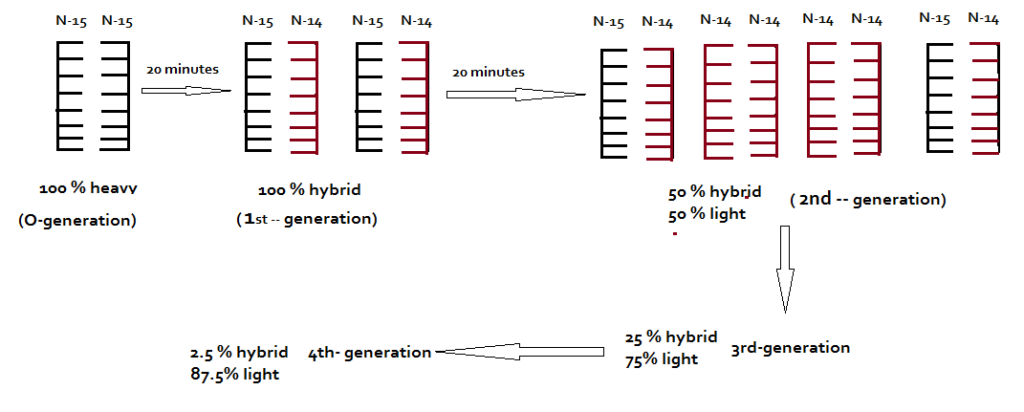
Conclusion:
Meselson and Stahl after the experiment concluded that DNA replicates semiconservatively, meaning that the double stranded DNA first separate and each DNA strand serves as a template for the synthesis of new complimentary strand. In other words, we can conclude that semiconservative model of dna replication exists in nature.

